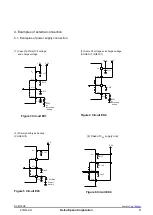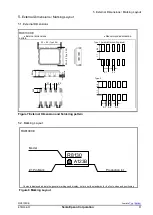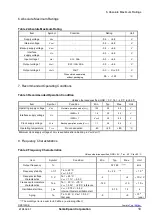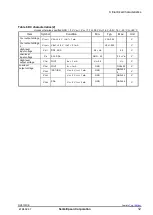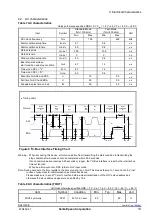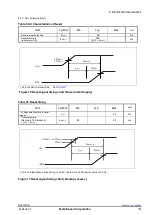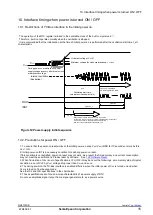
13. Overview of Functions and Registers
RX8130CE
Jump to
ETM50E-07
Seiko Epson Corporation
22
13.3. Description of registers
13.3.1. Clock and calendar registers (0h ~ 16h)
This is counter registers from a second to a year.
See
14.1 Clock calendar explanation]
for details.
13.3.2. RAM registers (20h ~ 23h)
This RAM register is read/write accessible for any data in the range from 00
h to FF
h.
13.3.3. Alarm registers (17h ~ 19h)
The alarm interrupt function is used, along with the AE, AF, and WADA bits, to set alarms for specified date, day, hour,
and minute values. See
[14.3. Alarm Interrupt Function ]
for the details.
13.3.4. Timer setting and Timer counter register for wakeup timer (1Ah ~ 1Eh)
This register is used to set the default (preset) value for the counter.
To use the wakeup timer interrupt function ,TE,
TF,
TIE,
TSEL2,TSEL1,
TSEL0,TBKON,TBKE bits are
set and used.
When the wakeup timer interrupt function is not being used, the wakeup timer control register
can be used as a RAM register. In such cases, stop the wakeup timer function by writing "0" to the TE and
TIE bits. See
[14.2. Wakeup Timer Interrupt Function ]
or the details.
13.3.5. Function-related register 1 (1Ch ~ 1Eh)
1) FSEL1, FSEL0 bit
A combination of the FSEL1 and
FSEL0 bits are used to select the frequency to be output.
The choice is possible by a combining FSEL-bits and CE/FOE-pin, select the frequency of clock
output or inhibit the clock output. See
or the details.
2) USEL , UF, UIE bit
This bit is used to specify either "second update" or "minute update" as the update generation timing of
the time update interrupt function.
See
14.4. Update interrupt function]
for the details.
3) TE, TF, TIE, TSEL2, TSEL1, TSEL0, TSTP,TBKON,TBKE bit
These bits are used to control operation of the wakeup timer interrupt function.
4) WADA, AF, AIE bit
These bits are used to control operation of the alarm interrupt function.
5) TEST
bit
These bits are the manufacturer's test bit. Always leave this bit value as "0"
..

